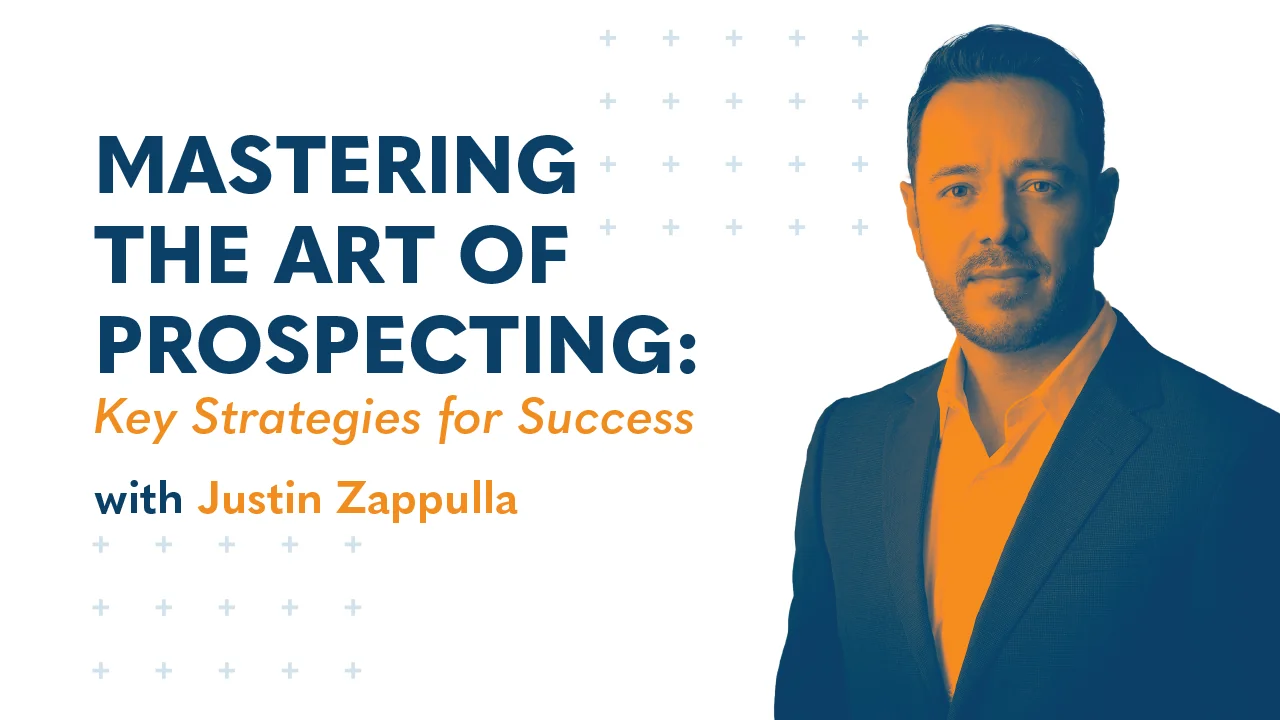Mastering the Art of Prospecting

The world of sales is constantly evolving. To be successful, sellers must consistently develop new skills or update old ones. One of the most important of these is prospecting. After all, finding new business and opportunities are key to an organization’s success. However, in a rapidly changing sales environment, seeking and obtaining new business is fraught with challenges.
In addition, for many sales reps, prospecting is one of the most difficult activities. On the one hand, it can seem tedious, an endless loop of emails, voicemails, and hang-ups. But on the other hand, it can seem overwhelming. With so much to do, it’s tough to start. That’s why it’s helpful to cut through the clutter. Here, let’s examine some of the challenges sellers face when prospecting. This will be followed by a series of techniques sales teams can use to master the art of prospecting today.
Challenges Related to Sales Prospecting
According to SalesIntel, it can take up to eight calls just to reach a prospect. That’s before sellers know if the prospect is even worth pursuing. In addition, according to Crunchbase, it takes another six calls to close a deal. Think about that. It takes more work to reach a prospect than it does to close a deal.
This frustration can result in a lackadaisical approach. Indeed, some sellers find excuses to avoid prospecting, such as:
- Time management
- Not knowing what to do
- Tired of hearing no
- Pipeline is already full
Many sellers do not have a prospecting system. This leads to false starts, dead ends, and missed opportunities. To manage prospecting efforts, set specific activities on specific days and block times.
Phone calls and emails are prospecting staples. And social media also offers opportunities to connect. However, too many choices can lead to inertia. Some sellers do not know what to do first, so they do nothing or not enough. Remember, with up to eight calls to reach a prospect, many sellers give up after two or three tries.
An unfortunate truth is that you will hear more noes than you hear yeses. Today, many prospects are so inundated by sales calls, no is their default answer. And in a hectic environment, many will not even read/hear unsolicited communication, let alone respond. However, in sales, the right yes can negate several noes, so prospecting success requires tenacity and resilience.
With an abundance of opportunity, sellers may put off prospecting until their pipelines are depleted. This is a mistake. Pipelines quickly come and go. Consistent prospecting maintains various opportunities at different stages of development.
Now that we’ve discussed some major hurdles, let’s examine the keys to prospecting success. This includes identifying prospects, preparing the message, and making contact.
How to Identify the Right Prospects
To identify the right prospects, look at your best customers. In B2B selling, you not only target organizations. You should target the people in roles that can open doors. Central to this is your Ideal Customer Profile (ICP). This is made up of the following:
- Demographics/persona
- Objectives and priorities
- Problems and challenges
- Value proposition
Start with the demographics of your target organizations. List their size, geography, location, revenue, and number of employees. From this, move into your customer persona. As each persona is unique, you should build an ICP for each. This should include their interests, what they care about, and what would make them react.
Next, determine their objectives and priorities. What do they want to accomplish? For example, an automobile dealership may want to maximize new and used sales. In addition, they want to increase customer satisfaction. Lastly, they want to build better relationships with manufacturers.
Discern what prevents them from achieving their goals. For example, in our automobile dealership, perhaps it’s a communication breakdown. Maybe it’s the cost of labor or materials. These are the things that keep your customer up at night.
Your value proposition states how you can help this customer. It should differentiate your solution and tell how it solves their unique problems. This could include features and benefits. Maybe it’s integrating a uniform system to ease communication or establishing online payments. In any case, articulate your solution to resonate with the customer personas you created.
How to Prepare Value Messages That Work
To prepare effective value messages, target specific messages to the right people. Research is key. At Janek, one of the biggest differentiators we see in successful prospecting is diligence in research.
Also, the amount of research is based on the transaction. A product/service with limited application requires less research than complex sales to enterprise clients. Align your research to the sales environment.
First, determine the information you need about the organization and contact. Then, identify where you can obtain this information, such as Google, LinkedIn, industry databases, and subscription services. Next is using this information to craft messages that resonate. Consider a four-point system, which includes the following:
- Tell why you are reaching out
- Show what’s in it for them
- Highlight features
- Present a call to action
Tell the prospect who you are, where you are from, and the purpose of your message. For example, “Hi Walter, this is Max from XYZ Corporation. I saw your post about supply chain issues in the Midwest, and I think I can help.”
Next, clearly and briefly state what is in it for them. What will they gain from reading your message or taking your call? Remember, in prospecting, this is not yet about a specific product or service. It’s about establishing contact and providing a reason to respond.
Follow this with some features or benefits. This prepares the prospect for a potential solution. For example, “We have extensive experience in your vertical and region. And our products/services have proven effective for the issues you face.”
Then, state the specific action they should take. This could be asking them to respond to your email/LinkedIn message/phone call. It could be setting an appointment on your calendar. Present a specific day and time for a quick call.
How to Make Contact & Secure Appointments
Once you identify the right prospects and prepare your message, it’s time to deliver that message. For sales reps, this means building a prospecting cadence, an outreach sequence to connect with prospects. This helps track where you are in the process. Also, it ensures you don’t send the same message twice. Rather than repeat yourself, you want to consistently augment your cadence.
First, consider the following:
- According to ServiceBell, 80 percent of calls end in voicemail
- According to Nutshell, the average response rate for prospecting voicemails is only 4-6 percent
This showcases the difficulty of prospecting. However, we see the benefits of a sustained effort in the following from Sales Hacker:
- 22 percent get a reply on the second attempt
- 33 percent get a reply on the third attempt
With that in mind, let’s look at building out our cadence. Here are some considerations:
- Number of touches
- Timing
- Medium
- Message
Set your sales cadence for a fixed number of days and a range of channels. Then, consider how many touches you will need. For example, five to seven days might require three or four touches. More days require more touches. The goal is to build familiarity and allow time to modify your message.
Next, consider the timing of your touches. For example, a 30-day cadence could require as many as 10-12 touches. Space them for maximum effect, such as a LinkedIn message on the first day. Follow this with an email on the second day and a phone call on the fourth. This requires balance.
Today, email, phone calls, and social media are the top mediums. Here, the more the better, and you want to mix it up. According to InsideSales, leveraging three or more mediums can increase contact rates by four times over a single method.
With each touch, ensure your message resonates. For example, build on your message. Instead of repeating your desire to talk, offer something specific, such as a relevant data point or statistic.
In addition, measure the success of your prospecting cadence. This is shown in your leading and lagging indicators. For example:
Leading indicators
- Touches per response
- Number of appointments
- Number of qualified leads
With leading indicators, you see what is working or not working as you move through your cadence. You can then adjust in real time.
Lagging indicators
- Gross revenue
- Average deal size
- Win rate
These are outcomes. While they cannot be adjusted in real time, they are helpful for measuring the success of your cadences.
As the sales environment changes, the ways we prospect must adapt. For example, prospecting has shifted dramatically from what it was five or even three years ago. That’s why sales professionals must continually modify their activity. We hope this helps sellers master the art of prospecting today to achieve greater success.

- Account Planning (11)
- Awards (47)
- Client Testimonial (37)
- Personal Branding (19)
- Podcast (11)
- Research (70)
- Sales Career Development (87)
- Sales Coaching (156)
- Sales Consulting (136)
- Sales Culture (170)
- Sales Enablement (354)
- Sales Leadership (110)
- Sales Management (248)
- Sales Negotiation (16)
- Sales Prospecting (124)
- Sales Role-Playing (18)
- Sales Training (231)
- Selling Strategies (263)
- Soft Skills (70)
- Talent Management (94)
- Trusted Advisor (27)
- Virtual Selling (49)
- Webinar (9)


























